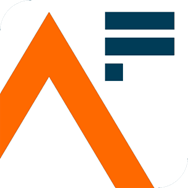My career story: Graeme March

Job title and department or organisation
Graeme is a Principal Data Scientist at HM Revenue and Customs (HMRC).
Grade
Graeme works at Grade 7 level.
Profession and entry route
Graeme is a member of the Government Digital and Data profession.
He entered the Civil Service at Assistant Officer (AO) grade through a departmental recruitment round.
Graeme’s career path
I graduated with a degree in graphic design in 1994. A year later I started working for a Geophysical company producing maps for oil companies to give an idea of where oil might be. In 1998 I took 18 months out to travel around the world which was a great experience. I then joined HM Revenue & Customs (HMRC) in November 1999 as a Graphic Designer at Administrative Officer (AO) grade working in the training office. I was producing graphics and imagery to support the learning of our tax inspectors and printing training manuals. The role was then changed to Executive Officer (EO) grade shortly after I started.
In 2014 I was promoted to Learning Technologies Consultant at Higher Executive Officer (HEO) grade. My role involved looking at the whole learning experience and bringing it up to date. I was looking at new tools available for e-learning packages and worked with the team to upgrade our learning offerings. In 2016, HMRC went through a restructure and my role was moved from London to Manchester. This encouraged me to find a new job with the Chief Digital and Information Office (CDIO) at HMRC in 2017, as Digital Performance Analyst. This was a lateral move and also meant that I was able to join the Digital Data and Technology Profession (DDAT) profession, which is now known as the Government Digital and Data profession. I had always had an interest in data, even though I had pursued graphic design. In CDIO I worked within digital services, gathering data to analyse the move from phone and paper communications to digital services.
In 2018 I had a temporary promotion to Senior Performance Analyst at Senior Executive Officer (SEO) grade to cover maternity leave. In this role I produced charts and dashboards for stakeholders, explaining the analysis to these audiences to support better understanding of the performance of our Application Programming Interface (API) platform.
I then gained another temporary promotion to Data Scientist at SEO grade in 2019. In this role I was responsible for leading the PowerBI Centre of Excellence. This involved sharing knowledge, engaging with users and communities of practice, and using wider power platform tools to build power apps and power automate flows. With my graphic design background, I had an interest in data visualisation and this role allowed me to work on this. I presented data and worked with visualisations to ensure our customers were able to easily understand our data. I was made a permanent member of staff in the role in July 2020.
I started my current role as Principal Data Scientist at Grade 7 level in May 2022. I am the strategy lead for my team. We look at how we can accelerate data science throughout HMRC to improve and speed up processes or gather greater insight.
The flowchart shows Graeme’s career progression from achieving a degree in graphic design to his current role as Principal Data Scientist. It shows the step-by-step journey Graeme has taken to achieve his current grade and experience. Enlarge the flowchart.
In my department we have Case Workers who visit customers. I have built a set of apps to support our planners to see case worker availability, their location, and travel times. Planners can use these apps to book in appointments quickly, which has been an improvement on the slower manual method of booking appointments which was used in the past. The apps have allowed us to see what coverage we have across the country using an Application Programming Interface (API) and improve the process for booking case worker appointments.
I am happy in my current role, but I might consider a promotion to Grade 6 if the right opportunity arises.
I am proud of the work I have done to build the API dashboards. The dashboards present a lot of information and are used by over 450 Software Developers. They show the performance of the API platform, which allows our liaison teams to work with Software Developers when software is not performing well. I built the dashboard almost 10 years ago and it is still being used daily.
It was hard becoming a Data Scientist from a different professional background. I had to learn completely new things and it was a steep learning curve. I had no experience in R Studio or coding, but I have been in HMRC for nearly 25 years now and I have worked my way up by learning new skills along the way.
Graeme’s advice
Be open to try new things and opportunities and do not limit yourself to just one specialism or career route. Try different data science tools or coding languages to broaden your knowledge. In my career I have completely changed specialism from being a Graphic Designer to now a Data Scientist. Changing careers felt hard at the time, but it has opened up so many more opportunities for me.
This career story was published on Tuesday 1 August 2023.
